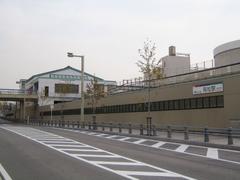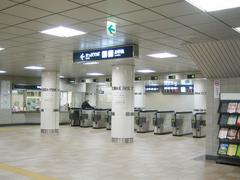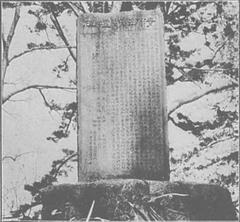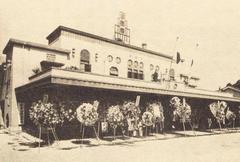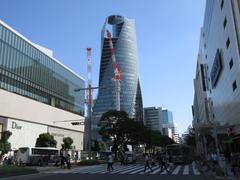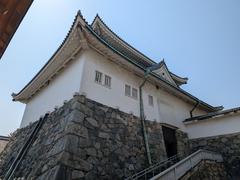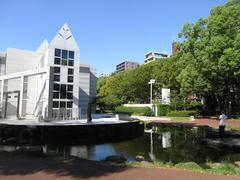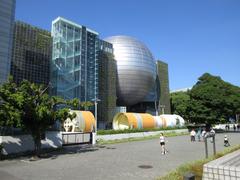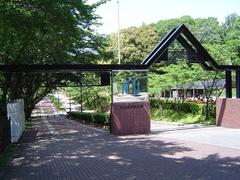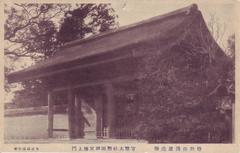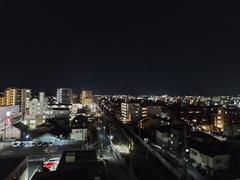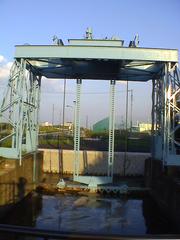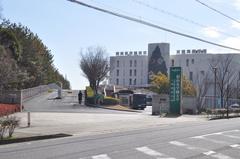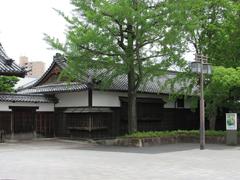Visiting Guide to Noritake Garden Red Brick Buildings in Nagoya, Japan
Publication Date: 18/07/2024
Introduction and Overview
This comprehensive guide delves into the historical significance of Noritake Garden, its transformation from an industrial hub to a cultural landmark, and provides essential visitor information, making it an essential resource for anyone planning to visit this iconic site in Nagoya.
Contents
- Early Beginnings: From Trading Company to Porcelain Pioneer
- The Red Brick Factories: Symbols of Innovation and Progress
- Enduring the Tides of Time: War and its Aftermath
- Transformation and Rebirth: From Industrial Hub to Cultural Landmark
- Noritake Garden Today: A Celebration of Heritage and Craftsmanship
- Visiting Information: Hours, Tickets, and Tips
- Unique Features and Events
- Exploring the Past: The Museum and Kiln
- Artistic Pursuits: Craft Center and Gallery
- Dining and Shopping: Indulge Your Senses
Early Beginnings: From Trading Company to Porcelain Pioneer
The story begins in 1876 with the establishment of Morimura Gumi, a trading company founded by Ichizaemon Morimura VI. Driven by the ambition to export Japanese arts and crafts to the West, the company ventured into porcelain production. This decision would forever alter the course of the Morimura family business and leave an indelible mark on Nagoya’s industrial landscape.
In 1904, after years of research and experimentation, Morimura Gumi achieved a breakthrough. They successfully fired their first piece of Western-style, bone china – a significant feat at the time. This triumph led to the formal establishment of Nippon Toki Kaisha Ltd. in 1914, later to be known globally as Noritake.
The Red Brick Factories: Symbols of Innovation and Progress
The production of Noritake china commenced in a factory built on the very grounds that now house Noritake Garden. Between 1904 and 1933, a series of red brick factories, designed by renowned architects, sprung up. These structures, built using advanced construction techniques imported from England, were not merely functional spaces but embodied the progressive spirit of the company.
The architectural design, characterized by high ceilings, large windows, and spacious interiors, facilitated efficient production and reflected a commitment to creating a healthy and comfortable working environment for the employees. These buildings, with their imposing yet elegant facades, became symbols of Noritake’s commitment to quality and innovation.
Enduring the Tides of Time: War and its Aftermath
The mid-20th century brought turbulent times. World War II cast a long shadow, impacting industries globally, and Noritake was no exception. Despite facing numerous challenges, the company and its resilient workforce persevered. The red brick factories, bearing witness to both periods of prosperity and hardship, stood as enduring symbols of Noritake’s unwavering spirit.
Transformation and Rebirth: From Industrial Hub to Cultural Landmark
As the 20th century progressed, Noritake, like many industries, underwent significant transformations. Production shifted to newer facilities, leaving the historic red brick buildings at a crossroads. Recognizing their historical and cultural value, Noritake made the visionary decision to repurpose these architectural gems.
In 1981, the company relocated its head office to a new building on the site. This marked the beginning of a gradual transformation. Finally, in 2001, Noritake Garden opened its doors to the public. This meticulously planned space seamlessly blended the preserved red brick structures with verdant lawns, tranquil ponds, and modern architectural elements.
Noritake Garden Today: A Celebration of Heritage and Craftsmanship
Today, Noritake Garden stands as a testament to the company’s rich legacy and its enduring bond with Nagoya. The meticulously preserved red brick buildings, each with its own story to tell, now house a variety of attractions:
- Noritake Museum: This museum offers a captivating journey through Noritake’s history, showcasing exquisite porcelain pieces from different eras, tracing the evolution of their designs, and highlighting the company’s contribution to ceramic art.
- Craft Center and Kiln: Visitors can witness skilled artisans demonstrating traditional and modern techniques of porcelain painting and crafting, offering a glimpse into the meticulous artistry behind each Noritake piece.
- Noritake Square: This complex, housed within a renovated factory building, offers a delightful mix of shopping and dining experiences. Visitors can browse and purchase a wide array of Noritake products, from elegant tableware to exquisite decorative items.
Visiting Information: Hours, Tickets, and Tips
- Visiting Hours: Noritake Garden is open daily from 10:00 AM to 5:00 PM. However, hours may vary on holidays, so it’s advisable to check the official website for the most up-to-date information.
- Tickets: Admission to the garden is free, but specific attractions like the Noritake Museum and Craft Center may have separate entrance fees. Combo tickets are available for a comprehensive experience.
- Travel Tips: Noritake Garden is easily accessible via public transport. It’s a 15-minute walk from Nagoya Station or a short ride on the city bus. Parking is available on-site for those driving.
- Nearby Attractions: When visiting Noritake Garden, consider exploring other nearby historical sites such as Nagoya Castle and the Toyota Commemorative Museum of Industry and Technology.
- Accessibility: The garden is wheelchair accessible, with ramps and elevators ensuring all visitors can enjoy the attractions.
Unique Features and Events
Noritake Garden is not just a historical site but a vibrant venue for various events and activities:
- Special Events: The garden hosts seasonal events, including flower festivals and craft workshops, providing visitors with unique experiences throughout the year.
- Guided Tours: Guided tours are available for those interested in a deeper understanding of Noritake’s history and craftsmanship. These tours offer detailed insights and behind-the-scenes looks at the porcelain-making process.
- Photographic Spots: With its beautifully preserved architecture and lush landscapes, Noritake Garden offers numerous picturesque spots perfect for photography enthusiasts.
Exploring the Past: The Museum and Kiln
- Noritake Museum: Step back in time at the Noritake Museum, where you can trace the evolution of Noritake dinnerware from its humble beginnings in 1904. The museum showcases a fascinating collection of antique chinaware, intricate designs, and exhibits that illustrate the company’s growth and technological advancements over the years.
- Old Kiln Brick Square: This atmospheric square is home to a massive brick kiln, a testament to the factory’s industrial past. The kiln, built in 1919, once played a crucial role in firing Noritake’s renowned ceramics. Today, it stands as a preserved piece of history, offering a glimpse into the traditional techniques that shaped the company’s legacy.
Artistic Pursuits: Craft Center and Gallery
- Noritake Craft Center: Unleash your creativity at the Noritake Craft Center, where you can partake in hands-on workshops and paint your own Noritake ceramics. This interactive experience allows visitors of all ages to engage with the brand’s artistic heritage and create personalized souvenirs.
- Noritake Gallery: Immerse yourself in the world of contemporary ceramics at the Noritake Gallery. This elegant space showcases a curated selection of modern Noritake pieces, highlighting the brand’s ongoing commitment to innovation and design excellence.
Dining and Shopping: Indulge Your Senses
- Restaurant Kiln: Housed within the renovated red brick building, Restaurant Kiln offers a sophisticated dining experience. Savor delectable dishes served on exquisite Noritake tableware, complementing your meal with the perfect ambiance. The restaurant’s menu features both Western and Japanese cuisine, prepared with fresh, seasonal ingredients.
- Noritake Shop: No visit to Noritake Garden is complete without browsing the Noritake Shop. Here, you’ll find an extensive selection of Noritake tableware, from classic designs to contemporary collections. Whether you’re searching for a special gift or adding to your own collection, the shop offers a wide range of choices to suit every taste and budget.
Tips for a Memorable Visit
- Allow Ample Time: To fully appreciate the diverse offerings of Noritake Garden, allocate sufficient time for your visit. Explore the museum, wander through the gardens, participate in a workshop, and indulge in a delightful meal.
- Capture the Beauty: Don’t forget your camera! Noritake Garden provides picturesque backdrops for capturing memorable photos. From the historic architecture to the vibrant gardens and exquisite ceramics, there are countless opportunities for stunning shots.
- Check for Special Events: Throughout the year, Noritake Garden hosts various events, exhibitions, and workshops. Check the official website or inquire at the information center upon arrival to see if any special events coincide with your visit.
- Combine with Other Attractions: Noritake Garden is conveniently located near other popular Nagoya attractions, such as the Nagoya Dome and the SCMAGLEV and Railway Park. Consider combining your visit with these destinations for a comprehensive Nagoya experience.
